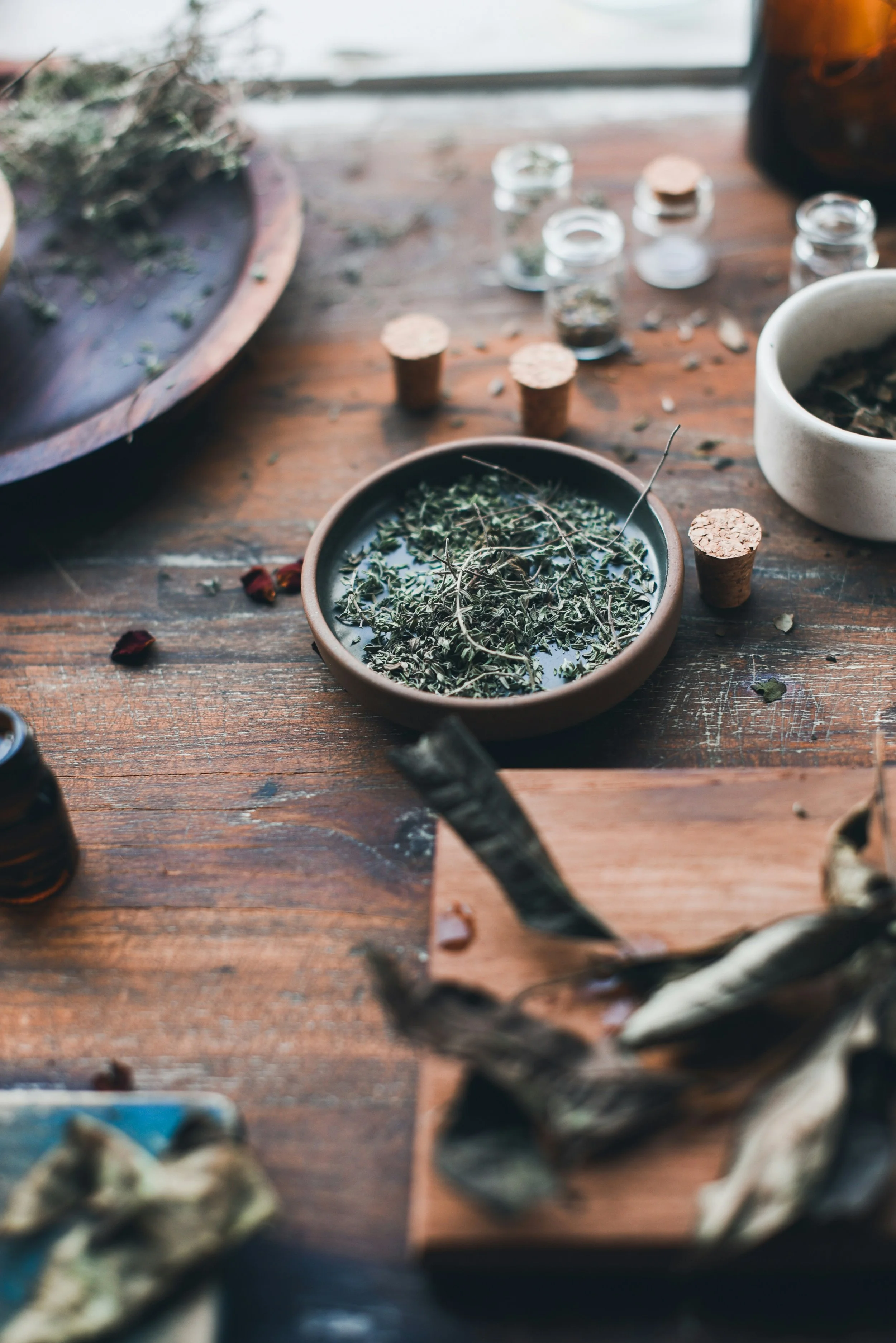Threads of Memory: How Craft and History Weave Us Back to Our Enchanted World
An exploration of ancestral knowledge, folklore, and the botanical wisdom that connects us to something far greater than ourselves.
There's something profoundly moving about watching a traditional craftsperson at work. Whether it's the rhythmic dance of a weaver's shuttle, the careful selection of herbs by a herbalist, or the patient shaping of clay by a potter's hands, we witness something that transcends mere skill. We glimpse the golden threads of memory that connect us to generations of makers, keepers of knowledge, and guardians of an enchanted relationship with the natural world that modern life has largely forgotten.
The Wisdom Keepers
In our rush towards digital futures and technological solutions, we've perhaps lost sight of the extraordinary library of knowledge held within traditional crafts. Each technique, each material choice, each seasonal practice carries within it the accumulated wisdom of countless generations who lived in intimate dialogue with their environment. The ethnobotanist knows this well—that behind every plant used in traditional dyeing, basket weaving, or medicine lies centuries of careful observation, experimentation, and reverence.
Consider the humble nettle, dismissed by many as nothing more than a garden nuisance. Yet our ancestors knew its secrets: its fibres could be spun into cloth finer than linen, its leaves provided sustenance and medicine, and its very presence indicated fertile, well-balanced soil. The craftspeople who worked with nettle weren't simply following instructions—they were participating in an ancient conversation between human hands and the green world.
Folklore as Living Science
What we often dismiss as mere folklore frequently contains sophisticated understanding of natural processes. The stories our grandmothers told about when to plant, when to harvest, when to gather—these weren't quaint superstitions but carefully encoded observations about lunar cycles, weather patterns, and plant behaviour. The folklore surrounding traditional crafts is often a form of ecological science, passed down through narrative because stories stick in memory far better than abstract facts.
Take the traditional practice of coppicing, where craftspeople would cut hazel or willow in specific patterns and seasons. The folklore surrounding this practice—when the moon should be waning, which direction to make the first cut, how to read the tree's response—contains within it a deep understanding of plant physiology and sustainable resource management that modern forestry is only beginning to fully appreciate.
The Enchanted Everyday
There's a particular magic in discovering how our ancestors found beauty and meaning in the most ordinary materials. The basketmaker who could read the landscape in the flexibility of willow shoots, the dyer who saw rainbows hidden in tree bark and flower petals, the herbalist who understood that healing grew literally beneath their feet—these craftspeople inhabited a world where the boundary between practical skill and wonder was beautifully blurred.
This enchantment wasn't separate from their work; it was essential to it. The reverence with which traditional craftspeople approached their materials—offering thanks, working with natural rhythms, using every part of what they harvested—created not only more beautiful objects but a more sustainable relationship with the natural world.
Threads of Connection
In our contemporary artisan community, we see these ancient threads being picked up again. Modern makers who choose to work with natural materials, who seek out traditional techniques, who pay attention to seasonal rhythms—they're not simply being nostalgic. They're recognising that within these old ways lie solutions to some of our most pressing contemporary challenges.
The permaculture designer who learns from traditional polyculture systems, the natural dyer who rediscovers forgotten recipes using local plants, the woodworker who chooses to work with storm-fallen timber rather than commercial lumber—these artisans are weaving together ancient wisdom with contemporary consciousness to create something entirely new yet deeply rooted.
Remembering Forward
Perhaps what's most remarkable about traditional crafts is how they offer us a different relationship with time itself. In our age of instant everything, the slow, seasonal rhythms of traditional making invite us into a different kind of temporality. The basketmaker who plants willows knowing they won't be ready to harvest for several years, the natural dyer who plans their garden around the colours they hope to create, the herbalist who gathers and dries plants according to lunar cycles—these practitioners embody a form of thinking that extends both backwards into ancestral knowledge and forwards into future seasons.
This is perhaps the greatest gift that traditional crafts offer us: not just beautiful objects or even sustainable practices, but a way of being in the world that recognises our deep interdependence with the living systems around us. In learning to work with our hands, to read the subtle signs of plants and seasons, to honour the materials we use, we begin to remember what it means to be human in a more-than-human world.
The Return to Wonder
As we face the environmental and social challenges of our time, the wisdom held within traditional crafts offers us more than historical curiosity—it offers us a pathway back to enchantment. Not the enchantment of escape or fantasy, but the deeper enchantment of recognition: that we are part of a vast, interconnected web of life, and that our human creativity is most powerful when it works in partnership with, rather than opposition to, the natural world.
In every traditional craft, we find an invitation to slow down, to pay attention, to remember that we are not separate from nature but expressions of it. In the hands of contemporary artisans who honour these traditions while addressing contemporary needs, these ancient wisdoms become not relics of the past but seeds of a more beautiful future.
The enchanted world isn't something we've lost—it's something we're learning to see again, one craft, one story, one carefully tended tradition at a time.

